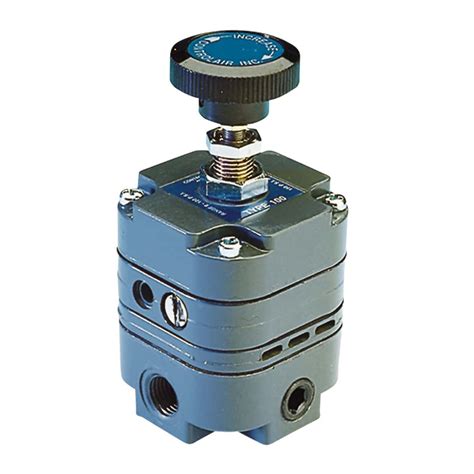Get Precise Air Pressure: The Ultimate Regulator Guide
Precise air pressure regulation is crucial in various applications, from scuba diving and paintballing to industrial processes and scientific experiments. Understanding how regulators work and choosing the right one for your needs can significantly impact safety, efficiency, and performance. This guide delves into the intricacies of air pressure regulators, helping you achieve the precise pressure you need.
What is an Air Pressure Regulator?
An air pressure regulator is a device that reduces and controls the pressure of a gas, typically compressed air, from a high-pressure source to a lower, more usable pressure. It acts as a valve, maintaining a consistent output pressure regardless of fluctuations in the input pressure or demand. This consistent output is vital for many applications where precise pressure control is paramount. Think of it as a sophisticated valve that intelligently adjusts to maintain your desired pressure.
Types of Air Pressure Regulators
Several types of air pressure regulators exist, each designed for specific applications and pressure ranges:
-
Single-Stage Regulators: These regulators reduce the input pressure to the desired output pressure in a single step. They're simpler, more compact, and generally less expensive but may not offer the same level of precision as two-stage regulators, especially at very high input pressures.
-
Two-Stage Regulators: These regulators reduce the pressure in two stages. The first stage reduces the high input pressure to an intermediate pressure, while the second stage further reduces it to the desired output pressure. This design provides greater precision, stability, and capacity to handle larger pressure drops. They are often preferred for demanding applications requiring highly consistent output.
-
Diaphragm Regulators: The most common type, these regulators use a flexible diaphragm to control the output pressure. Changes in output pressure move the diaphragm, adjusting the valve to maintain the set pressure.
-
Piston Regulators: These regulators use a piston instead of a diaphragm. Piston regulators are typically more robust and can handle higher pressures and flows but are often more expensive.
-
Proportional Regulators: These advanced regulators offer highly precise and dynamic pressure control, often used in automated systems and processes requiring rapid pressure adjustments.
Choosing the Right Air Pressure Regulator
Selecting the appropriate regulator hinges on several factors:
-
Input Pressure: Determine the maximum input pressure your system will provide. The regulator must be rated for at least this pressure.
-
Output Pressure: Identify the precise output pressure required for your application.
-
Flow Rate: Consider the volume of air your application needs. Regulators have different flow rate capacities.
-
Accuracy: How precise does your pressure need to be? For critical applications, a high-accuracy regulator is crucial.
-
Application: The application itself dictates the type of regulator. Scuba diving requires a different regulator than an industrial pneumatic system.
How to Use an Air Pressure Regulator
While the specifics vary by model, the general steps for using an air pressure regulator are:
-
Connect the Input: Connect the regulator's input port to the high-pressure air source.
-
Connect the Output: Connect the regulator's output port to your application.
-
Set the Desired Pressure: Use the adjustment knob to set the desired output pressure. This usually involves turning a knob or adjusting a screw.
-
Monitor the Pressure: Use a pressure gauge to monitor both input and output pressure to ensure the regulator is functioning correctly and maintaining the desired output pressure.
-
Safety Precautions: Always follow the manufacturer's instructions and safety precautions.
Troubleshooting Common Air Pressure Regulator Issues
-
Inconsistent Output Pressure: This might indicate a faulty regulator, a clogged filter, or insufficient input pressure.
-
Leaking Regulator: Check for leaks around the connections and the regulator itself. A leaking regulator needs repair or replacement.
-
Regulator Won't Adjust: The adjustment mechanism might be jammed or damaged.
What are the different types of pressure gauges used with air pressure regulators?
Pressure gauges come in various types, including analog dial gauges (most common), digital gauges (offering precise readings), and compound gauges (showing both positive and negative pressure). The choice depends on the needed accuracy and the application's demands for reading speed and precision.
How often should I maintain or replace my air pressure regulator?
Regular maintenance, including cleaning and inspection, is crucial to prolong the life and accuracy of your air pressure regulator. The frequency depends on usage intensity and the environment. However, annual inspections and cleaning are generally recommended. If you notice inconsistencies or leaks, replacement might be necessary.
What safety precautions should I take when using an air pressure regulator?
Always wear appropriate safety glasses and follow the manufacturer's instructions. Never exceed the regulator's pressure ratings. Ensure proper ventilation in the area, and be aware of potential hazards associated with high-pressure air. Regularly inspect the regulator and connections for leaks or damage.
By understanding the types, applications, and maintenance of air pressure regulators, you can achieve precise and consistent air pressure for a wide range of uses. Remember to always prioritize safety and follow manufacturer recommendations for optimal performance and longevity.

